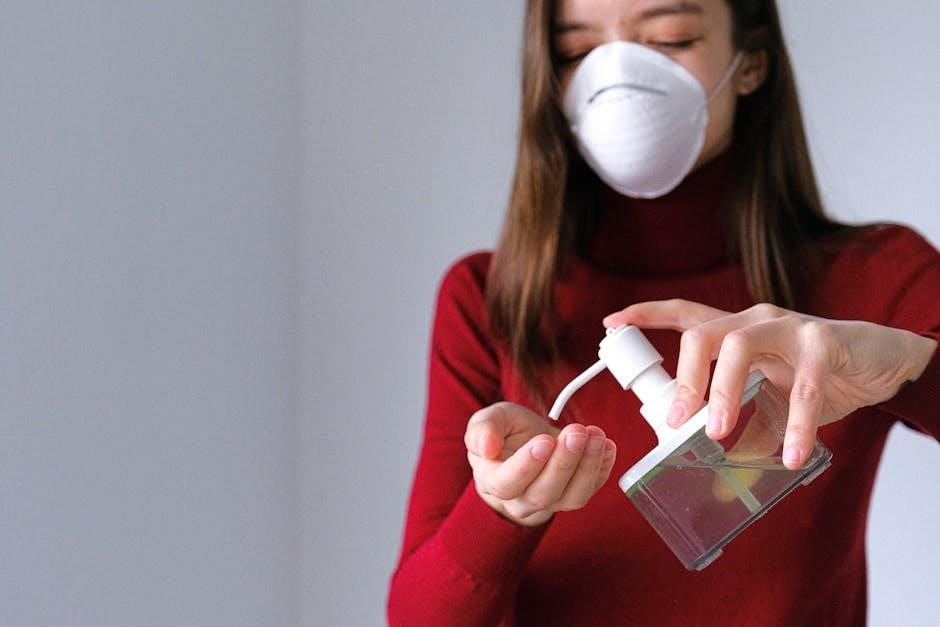The Tommee Tippee Sanitizer is an efficient electric steam sterilizer designed to eliminate 99.9% of bacteria, ensuring your baby’s feeding accessories are clean and safe.
Overview of Tommee Tippee Sanitizer
The Tommee Tippee Sanitizer is a high-efficiency electric steam sterilizer designed to eliminate 99.9% of bacteria and germs, ensuring baby feeding accessories are thoroughly cleaned. It accommodates up to six bottles and various accessories, making it ideal for busy parents. The sterilization process is quick, taking approximately 5 minutes, with an indicator light signaling completion. This product is user-friendly, providing peace of mind for parents who prioritize their baby’s health and safety. Its compact design and efficient operation make it a practical choice for maintaining hygiene in baby care essentials.
Importance of Sanitizing Baby Feeding Accessories
Sanitizing baby feeding accessories is crucial for preventing the growth of harmful bacteria and germs, which can pose serious health risks to infants. Milk residues and moisture create ideal conditions for bacterial growth, making sterilization essential. Using a Tommee Tippee Sanitizer ensures that all accessories, including bottles and pacifiers, are cleaned to the highest standard. This step is vital for maintaining your baby’s health and safety, especially during the first few years when their immune system is still developing. Regular sterilization provides peace of mind for parents, knowing their baby’s essentials are germ-free and safe for use.

Setting Up Your Tommee Tippee Sanitizer
Unbox and wash all parts in warm soapy water. Assemble the sterilizer, pour 80ml of water into the base, and ensure all components are properly aligned for use.
Unboxing and Initial Preparation
Start by carefully unboxing the Tommee Tippee Sanitizer and its components, including the base, trays, and accessories. Before first use, wash all parts in warm soapy water to ensure hygiene. Rinse thoroughly and dry with a clean cloth. Next, assemble the sterilizer by placing the trays into the base unit according to the provided diagram. Pour exactly 80ml of fresh water into the sterilizer base, ensuring not to overfill. Plug in the unit and familiarize yourself with the controls. Allow the sterilizer to cool before cleaning or handling any internal parts. Proper preparation ensures efficient sterilization and longevity of the device.
Understanding the Components and Parts
The Tommee Tippee Sanitizer consists of several key components designed for efficient sterilization. The base unit houses the water reservoir and heating element, while the upper and lower trays provide ample space for bottles and accessories. The central stem ensures even steam distribution, and the lid seals the unit during operation. Additional parts like nipple tongs aid in handling sterilized items without contamination. Each component is crafted to ensure durability and ease of use. Familiarizing yourself with these parts will help you optimize the sterilization process and maintain the device effectively.
Pre-Use Cleaning and Setup Instructions
Before first use, thoroughly clean the Tommee Tippee Sanitizer by rinsing all parts with warm soapy water or placing them in the dishwasher. Ensure the base unit is wiped with a damp cloth, avoiding harsh chemicals. Pour 80ml of water into the base, ensuring not to exceed this amount. For initial setup, submerge components in boiling water for 5 minutes to ensure hygiene. Regularly descale the unit, especially in hard water areas, using white vinegar or a descaling sachet. This maintains efficiency and prevents limescale buildup. Proper preparation ensures optimal performance and safety for sterilizing your baby’s feeding accessories.
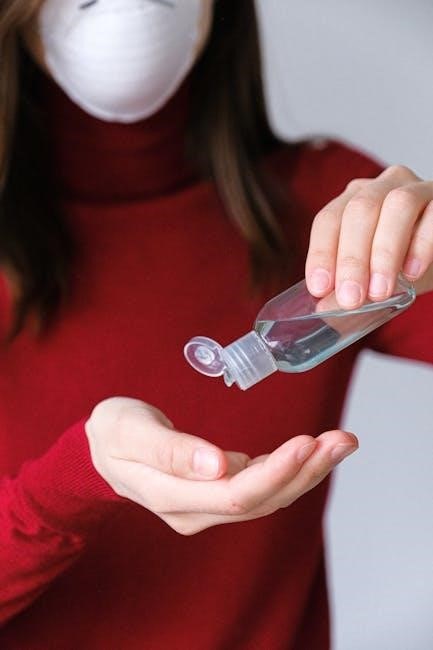
Using the Tommee Tippee Sanitizer
The Tommee Tippee Sanitizer efficiently sterilizes baby accessories in 5 minutes, indicated by an amber light that turns off when the cycle completes, ensuring germ-free safety.
Step-by-Step Sterilization Process
To use the Tommee Tippee Sanitizer, begin by pouring 80ml of water into the sterilizer base. Place the bottles and accessories into the trays, ensuring proper arrangement for even steam distribution. Close the lid securely and plug in the unit. Press the power button to start the sterilization cycle, which takes approximately 5 minutes. The amber light will illuminate during the process and turn off once completed. Allow the sterilizer to cool slightly before opening. Remove the sterilized items, which are now free from 99.9% of bacteria, and they are ready for use or storage.
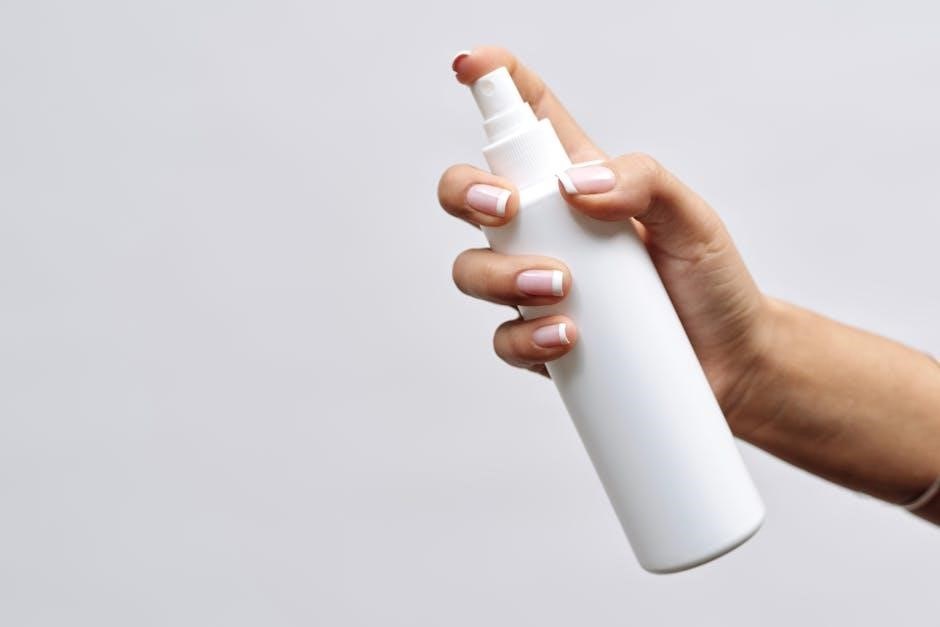
How to Load Bottles and Accessories
To load the Tommee Tippee Sanitizer, place bottles upright in the lower tray, ensuring they are spaced evenly. Accessories like pacifiers or breast pump parts can be added to the upper tray. The sterilizer can hold up to six bottles or a combination of fewer bottles and additional items. Avoid overcrowding to ensure proper steam circulation. Use the provided nipple tongs to handle small accessories safely. Arrange items according to the marked guidelines on the trays for optimal sterilization. Once loaded, close the lid securely to begin the cycle. Proper loading ensures efficient sterilization and prevents damage to your baby’s feeding essentials.
Operating the Sterilizer: Cycle Time and Indicators
The Tommee Tippee Sanitizer operates with a 5-minute sterilization cycle, indicated by an amber light that turns off once the process is complete. Ensure exactly 80ml of water is poured into the base before starting, as excess water can prolong the cycle. The sterilizer is designed to emit steam, which may appear abundant but is normal. Avoid opening the lid during operation to maintain efficiency. Once the cycle finishes, the light will turn off, signaling that your bottles and accessories are ready. Always wait for the cycle to complete before unloading to ensure proper sterilization and safety for your baby’s feeding essentials.
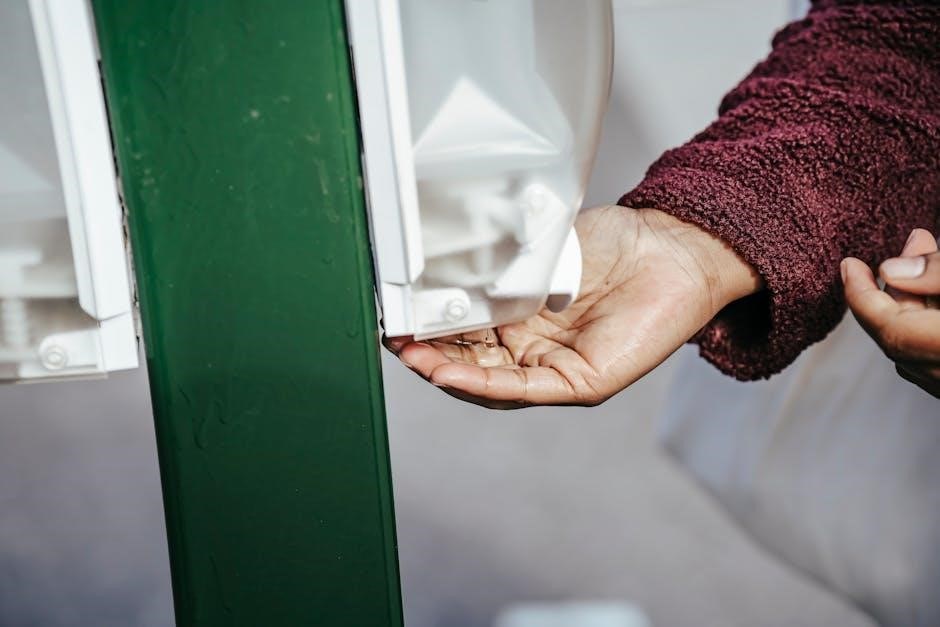
Maintenance and Cleaning
Regularly clean the sterilizer by emptying water and wiping with a damp cloth. Descaling is essential to prevent limescale buildup, ensuring optimal performance and longevity of the unit.
Regular Cleaning of the Sanitizer
Regular cleaning is crucial for maintaining the efficiency and hygiene of your Tommee Tippee Sanitizer. After each use, unplug the unit and allow it to cool. Pour out any remaining water from the base by tipping it over a sink. Use a damp cloth to wipe down the interior and exterior surfaces, avoiding harsh chemicals or abrasive cleaners that could damage the components. This routine helps prevent the buildup of residue and ensures the sterilizer continues to function effectively. Regular cleaning also helps maintain the longevity of the device and keeps it in optimal working condition for consistent sterilization results.
Descaling: Why and How to Do It
Descaling your Tommee Tippee Sanitizer is essential to remove limescale buildup, which can impair performance and damage the heat plate. If you live in a hard water area, limescale accumulates faster, requiring more frequent descaling; Use a stainless steel-safe descaler or white vinegar, following the manufacturer’s instructions. Pour the solution into the base, let it soak overnight, then rinse thoroughly. For severe buildup, extend soaking up to 24 hours. Avoid bleach or harsh chemicals. After descaling, run a cleaning cycle to ensure the unit is ready for use. Regular descaling prevents operational issues and extends the lifespan of your sanitizer.
Best Practices for Long-Term Maintenance
Regular descaling is crucial to prevent limescale buildup, especially in hard water areas, to maintain efficiency and prevent damage. After each use, pour out remaining water and wipe the base with a damp cloth. Avoid using abrasive cleaners or harsh chemicals. Check the heat plate regularly for limescale and clean it as needed. Store the sanitizer in a dry place when not in use, ensuring it’s thoroughly dried to prevent mold. For extended storage, run a descaling cycle and wrap the unit securely. Following these practices ensures optimal performance, extends the lifespan of your sanitizer, and keeps your baby’s accessories safe and clean.
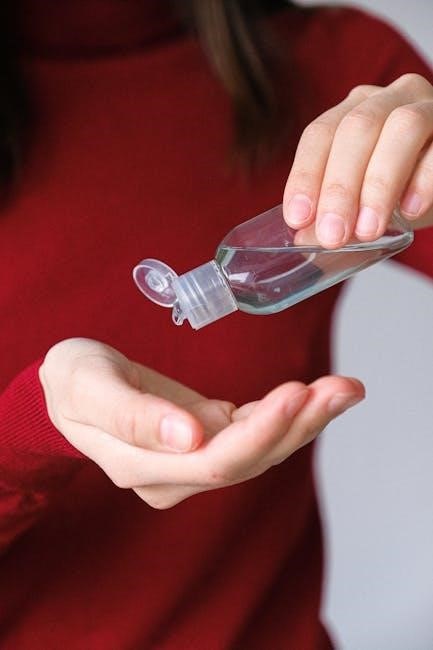
Troubleshooting Common Issues
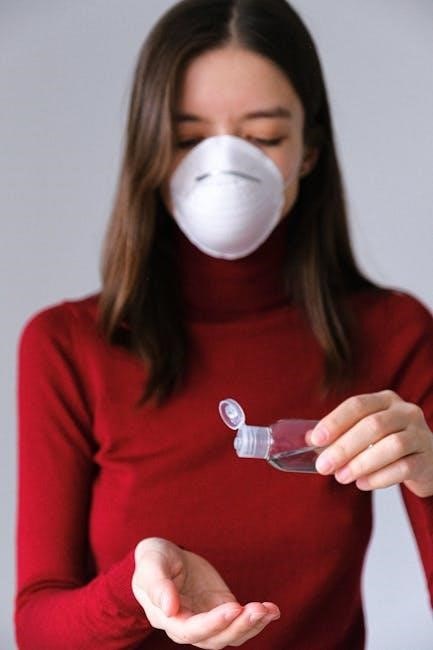
Excessive steam may indicate overloading. Check loading guidelines. Chalky marks on bottles suggest limescale buildup, requiring descaling. Flaky residue in the machine typically results from limescale.
Chalky Marks on Bottles: Causes and Solutions
Chalky marks on bottles are often caused by limescale buildup, a common issue in hard water areas. These marks are harmless but can be unsightly. To resolve this, regularly descale your Tommee Tippee Sanitizer using a stainless steel-safe descaler or white vinegar. After descaling, rinse thoroughly and run a cleaning cycle. Ensure the unit is dry before reuse. Proper descaling maintains the sanitizer’s efficiency and prevents future marks. Always follow the manufacturer’s guidelines for descaling frequency based on water quality to keep your baby’s bottles clean and free from residue.
Flaky Residue in the Machine: What to Do
Flaky residue in your Tommee Tippee Sanitizer is typically caused by limescale buildup loosening during the sterilization cycle. To address this, perform a descaling process using a stainless steel-safe descaler or white vinegar. Follow the product’s instructions for the correct ratio and soaking time. After descaling, rinse the machine thoroughly and run a cleaning cycle to remove any remaining residue. Regular descaling is crucial, especially in hard water areas, to maintain the machine’s performance and prevent damage. Always refer to the user manual for specific guidance on descaling frequency and methods to keep your sanitizer functioning effectively.
Water Left in the Sanitizer: Is It Normal?
Yes, it is normal to find water left in the Tommee Tippee Sanitizer after a cycle. Most of the 80ml water added evaporates during sterilization, but some may remain. This water is sterile and safe. After use, empty the remaining water by tilting the unit over a sink and wipe it dry with a damp cloth. Regularly cleaning and descaling can help prevent limescale buildup, which may trap water. Storing the sanitizer in a dry place after use ensures optimal performance and prevents potential damage. Always follow the manufacturer’s guidelines for maintenance to keep your sanitizer in great condition.

Reassembly and Storage
After sterilization, reassemble bottles using the provided nipple tongs to avoid contamination. Store the sanitizer in a dry, secure location, ensuring all parts are clean and dry.
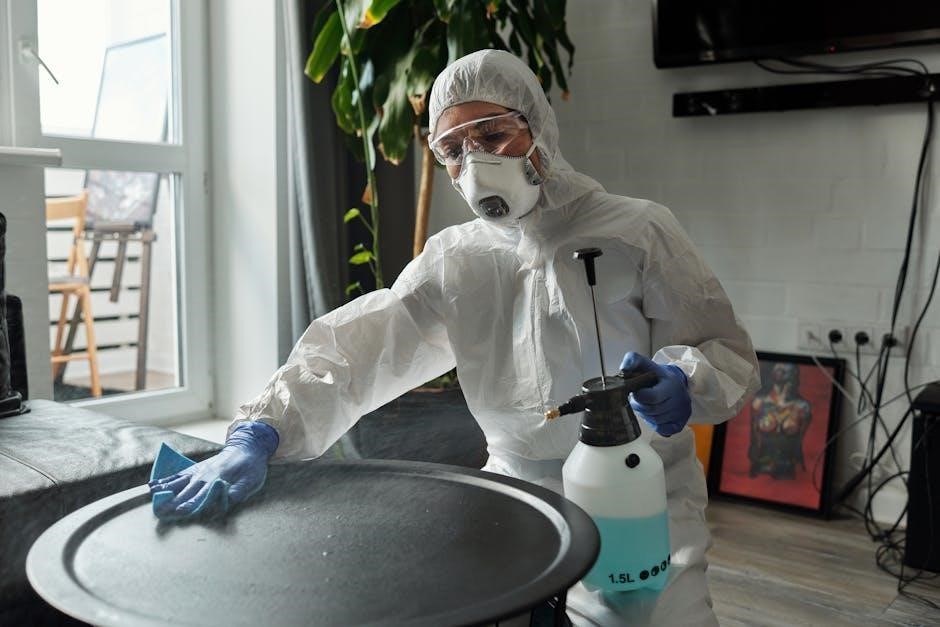
How to Reassemble Bottles After Sterilization
After sterilization, reassemble bottles using the provided nipple tongs to avoid contamination. Wash your hands thoroughly before handling the sterilized parts. Use the tongs to lift nipples and screw rings, ensuring they are securely attached. Gently shake off any excess water from the bottles. Reattach the nipple to the bottle using the screw ring, tightening it firmly. Check for any remaining water droplets inside the bottles. If storing, place the fully assembled bottles in a clean, dry location. This method ensures your baby’s feeding accessories remain sterile and ready for use up to 24 hours.
Proper Storage of the Sanitizer and Accessories
After use, ensure the sanitizer is dry and free from water to prevent mold. Store it in a dry place, away from direct sunlight. For long-term storage, run a descaling cycle and clean thoroughly. Use a soft cloth to wipe down the unit and accessories. Store accessories like bottles and nipples in a clean, dry container with a lid to keep them organized and protected. Follow manufacturer guidelines for optimal storage conditions to maintain performance and longevity. Proper storage helps preserve the sanitizer and accessories, ensuring they remain in good condition for future use.
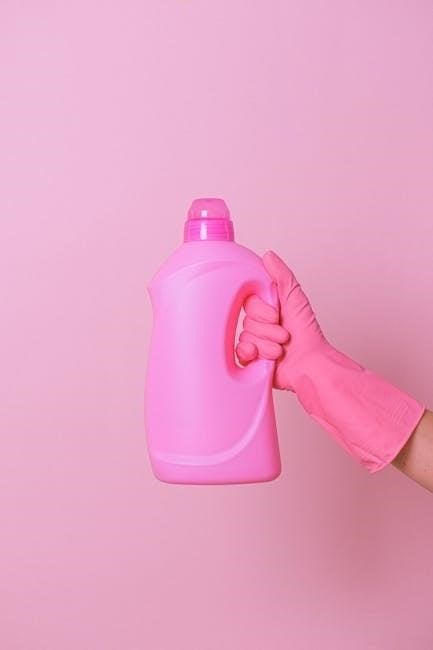
Additional Tips and Accessories
The included nipple tongs help safely handle sterilized items without contamination, ensuring everything remains clean and ready for your baby’s use.
Using Nipple Tongs for Safe Handling
Nipple tongs are essential for safely handling sterilized bottles and accessories. They prevent direct contact, reducing contamination risk. Use them to remove nipples and squeeze excess water from pacifiers. After sterilization, grip the nipple firmly and attach it to the bottle. Ensure hands are clean or use tongs exclusively. This maintains sterility, crucial for your baby’s health. Regularly clean the tongs with warm soapy water. Proper use ensures items remain germ-free, aligning with Tommee Tippee’s commitment to safety and hygiene.
Important Safety Tips for Parents
Always unplug the sterilizer and let it cool before cleaning. Keep children away from hot surfaces and steam. Use nipple tongs to handle sterilized items to prevent contamination. Ensure bottles are fully assembled with clean hands or tongs post-sterilization. Regular descaling is vital, especially in hard water areas, to maintain efficiency and prevent limescale buildup. Avoid using abrasive cleaners or bleach, as they can damage the unit. Store the sterilizer in a dry place when not in use. Follow the recommended water level to ensure proper function. These steps ensure safe and effective sterilization, keeping your baby’s accessories clean and hygienic.
The Tommee Tippee Sanitizer is a reliable and efficient solution for ensuring baby accessories are clean and germ-free, maintaining high hygiene standards and providing peace of mind for parents.
Benefits of Using Tommee Tippee Sanitizer
The Tommee Tippee Sanitizer offers numerous benefits, primarily its ability to eliminate 99.9% of bacteria and germs, ensuring a sterile environment for baby feeding accessories. Its efficient steam sterilization process completes in just 5 minutes, making it a time-saving solution for busy parents. The sanitizer accommodates up to six bottles and various accessories, providing convenience and versatility. Regular use helps maintain high hygiene standards, reducing the risk of infections. Additionally, the sanitizer is easy to clean and maintain, with clear guidelines for descaling and care, ensuring optimal performance over time. This makes it a valuable investment for any parent seeking reliable and effective sterilization.
Final Thoughts on Keeping Baby Accessories Clean
Keeping baby accessories clean is crucial for maintaining your baby’s health and safety. The Tommee Tippee Sanitizer simplifies this process with its efficient steam sterilization, ensuring all items are germ-free. Regular descaling and proper maintenance are essential to extend the lifespan of the sanitizer and prevent limescale buildup. Always follow the manufacturer’s instructions for setup, usage, and care to ensure optimal performance. By incorporating the Tommee Tippee Sanitizer into your routine, you can confidently provide your baby with clean and safe feeding essentials, giving you peace of mind as a parent.
